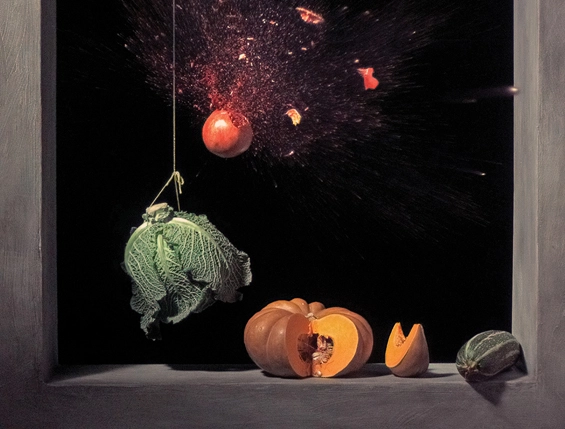
The biography of Juan Sánchez Cotán is embraced by mysticism as well as visual harmony since the highbrow life in Toledo was under the influence of Catholic mysticism. At that time Juan Sánchez Cotán was the student who eagerly wanted to get knowledge from the prominent still-life (bodegones) painter Blas del Prado. His subsequent paintings were dramatically influenced by the arrangement pattern which was supposed to reveal some hidden universal truth.
In 1603 Juan Sánchez Cotán entered a monastery in Segovia in order to serve as a Carthusian lay brother. This action changed the artist’s priorities together with the dimension of the world’s perception. The history of his life put a footprint on his artworks which tend to reflect some religious motifs.
The history of Juan Sánchez Cotán’s life is connected with several spots, and the last for him to live and create was Granada. It was the place where he was transferred in 1612, and he went the way of all flesh there.
Arts Made by Juan Sánchez Cotán
Juan Sánchez Cotán is the painter with a delicate taste. Therefore, he is the contributor of El Escorial Art School. His works cannot be evaluated as just of the primitive tenderness and appeasable rhythm since his art history reports on his still-life manner. His drawings style is determined as one of rigorous naturalism. However, he somewhat practiced geometric meditations which are appointed to the Archimedes’ hyperbola.
Still Life with Game Fowl, Vegetables and Fruits
As far as still-life manner of Juan Sánchez Cotán is concerned, his art manifests the depiction of simple fruit and vegetables depicted from a variety of positions. His work ‘Still Life with Game Fowl, Vegetables and Fruits’ referring to 1602 is the example of form depiction in the
mathematic clarity towards the black background. The realism of the offered artwork is so deep that it leaves to
mind twist unturned while perceiving.
Quince, Cabbage, and Cucumber
Another artwork of Juan Sánchez Cotán of 1602 is ‘Quince, Cabbage, and Cucumber.’ The last figure is symbolic since the cucumber is pushed over and visualizes movement which reflects shadow. All elements are highly geometric which reveals Archimedes’ hyperbola of meditation.
Key Ideas in Paintings
The native country inclined Juan Sánchez Cotán to create the images of Spanish explorations. The painter tends to depict still life in a variety of forms which are highly detailed and geometric. Some of his artworks have to be analyzed from the astronomic point of view since they represent a range of celestial bodies and the night sky.
Juan Sánchez Cotán was a devoted painter not limited by imagination. He’s willing to revive Spanish influence was so strong that he spoke to the onlooker through a paradigm of mystery and endless discoveries.






